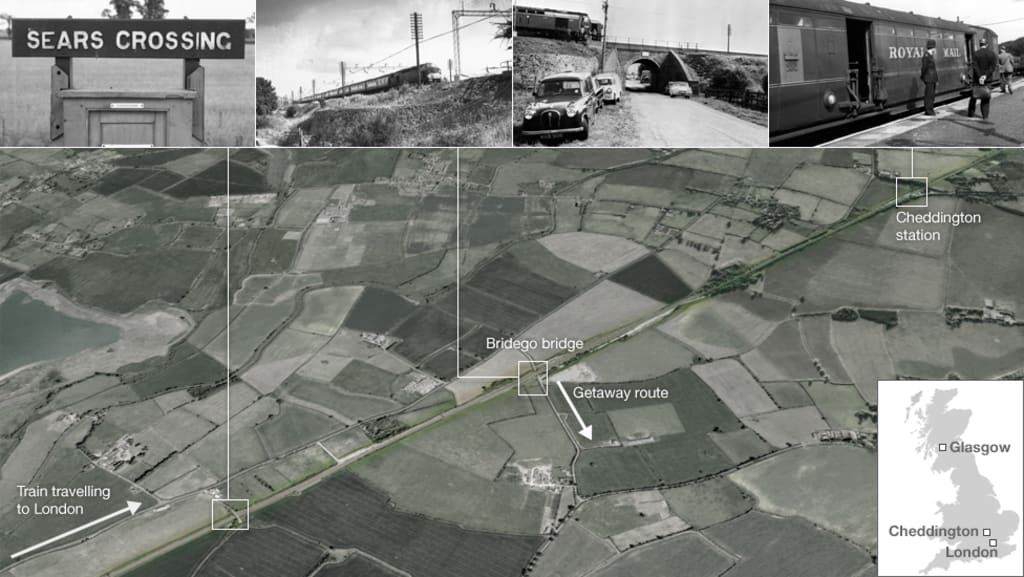
The Great Train Robbery was the robbery of £2.6 million from a Royal Mail train heading from Glasgow to London on the West Coast Main Line in the early hours of 8 August 1963, at Bridego Railway Bridge, Ledburn, near Mentmore in Buckinghamshire, England.
Leatherslade Farm: The Hideout
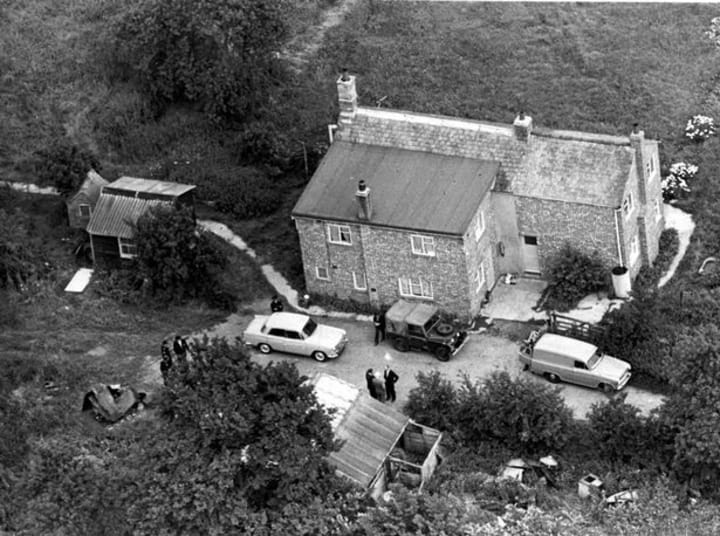
Photo by Pinterest
[Before and] after the robbery, the gang hid at Leatherslade Farm. After the police found this hideout, incriminating evidence led to the eventual arrest and conviction of most of the gang. The ringleaders were sentenced to 30 years in jail (Wikipedia, 2018).
'The Great Train Robbery' (2013): Dramatisation
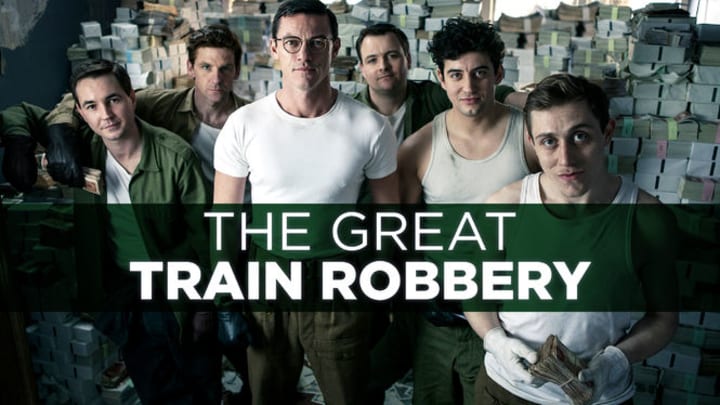
Photo by Flixable
The Great Train Robbery is of course a dramatised miniseries television programme written by Chris Chibnall, based on the factual Great Train Robbery, also known as the 'crime of the century' (stated by Charlie Wilson in the programme), in 1963. The miniseries first aired on BBC One on December 18 and 19, 2013. It is now available to watch on Netflix UK.
I, myself, are quite fond of television dramatisations of true crime. They're straight to the point. They don't drag it over, making it long and frustrating to watch to the end. I came across this in 2013, but for some reason, I never decided to watch it. Do I regret not watching it when I discovered it? Yes. I binge-watched the programme while dog-sitting during mid-August, and, was I glued to the television? Yes. The programme is such a brilliant make of the 1960s crime.
The programme begins with the first 90-minute-part-of-two "A Robber's Tale" with the initial four ring leaders and masterminds of the crime: Bruce Reynolds (Luke Evans), Charlie Wilson (Jack Roth), Roy James (Martin Crompston) and Buster Edwards (Neil Maskell) discussing the train routes from Glasgow to London, naming possible locations where they can stop the train at a halt, and how, between them, they're going to manage robbing the official Royal Mail's sacks of cash – after a disappointing attempt to the Heathrow London Airport robbery. Each of the ring-leaders knew of other people whom could possibly help them with their plans – including the person only known as the "Ulsterman" [later named as Brian Field in the dramatisation, possibly Patrick McKenna in the factual crime] (Del Synnott), the crucial link to the Great Train Robbery's rented-out farmhouse location. All outside helpers during the robbery were given a lump-sum of the stolen cash to keep their names quiet, and, for helping them.
By the time the carefully planned crime had been completed by Bruce Reynolds, there would be a gang of fifteen persons taking part.
The gang planned to gather some belongings and headed out to Leatherslade Farmhouse in Aylesbury Vale, located in the northern half of Buckinghamshire (the property they rented-out to hideout before and after committing the robbery). If neighbours asked, they were 'decorators for the persons moving into the property'. Overall, they spent a week at the farm, chilling with beer and cigarettes; and preparing themselves using long-sleeved overalls and leather gloves to prevent them from leaving any possible forensic evidence leading to them. This was their biggest downfall during the police investigation.
In the early hours of August 8, 1963, the gang of working-class, small-time crooks headed out to Bridego Railway Bridge in Buckinghamshire, travelling using three military pick-up vans to stash the stolen cash in, as well as carry each of the gang members. While the majority of the [other] South West Gang ducked-down beneath grass verges, including Gordon Goody (Paul Anderson), John Daly (James Bye), Jimmy White ("Jimmy"), Ronnie Biggs (Jack Gordon), Tommy Wisbey (Jordan Long), James Hussey ("Big Jim") and Bob Welch ("Bob"), the above named ringleaders, as well as three men known only as numbers "1," "2," and "3." Roger Cordrey (Nicholas Murchie)—the electronics expert—tampered with the lineside signals to pull the train to a halt at 3:00 AM.
During the struggle, Jack Mills (Eric Hulme) was beaten over the head with a metal bar. John Daly (James Bye) was the train stopper and getaway driver after the robbery had taken place.
The second episode called "A Copper's Tale" dramatically investigates the crime after it had been committed. The robbers had stolen a sum worth £2,631,684, contained in 120 mailbags. Although that is the figure stated in the dramatisation, the amount stolen was believed to be £2,595,997. After Charlie Wilson had announced the amount stolen, Bruce Reynolds knew that 'it's too much' and the police will be hot about hunting the gang down.
As media grows over the biggest crime in Britain, the gang are hiding out at Leatherslade Farm listening to the radio on the live news. Meanwhile, Scotland Yard's best police officers are called up to investigate with DCS Tommy Butler (Jim Broadbent) in charge of the investigation.
Following a tip-off from a herdsman who used a field adjacent to Leatherslade Farm, a police sergeant and constable called there on 13 August 1963, five days after the robbery. The farm was deserted but they found the truck used by the robbers, which had been hastily painted yellow, as well as the Land Rovers. They also found a large quantity of food, bedding, sleeping bags, post-office sacks, registered mail packages, banknote wrappers and a Monopoly board game. (Wikipedia, 2018)
The robbers' downfall in the investigation was failing to completely prevent any forensic evidence leading to them being uncovered at Leatherslade Farm. Their clean-up didn't quite go so well, leaving fingerprints and partial palm-prints on ketchup cartons, the bath tub and on the Monopoly board game in which they played after the crime had been committed using real money.
The robbers soon got captured and sentenced one-by-one, though Bruce Reynolds took a further two years to be captured and jailed. 11 men were to be sentenced up to 30 years in prison.
At the time, the severity of the sentences caused some surprise. When mastermind Bruce Reynolds was arrested in 1968, he allegedly told arresting officer Tommy Butler that those sentences had had a detrimental effect. According to him, they had prompted criminals generally to take guns with them when they set out on robberies. (Wikipedia, 2018)
The Names of Suspects and Serving Prison Time
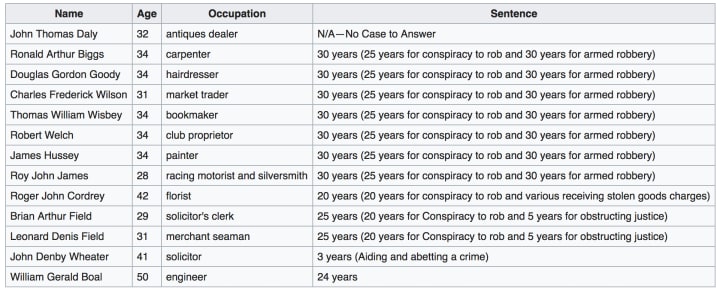
Photo by Wikipedia
Appeals, July 1964
On 13 July 1964, the appeals by Lennie Field and Brian Field (no relation) against the charges of conspiracy to rob were allowed. This meant that their sentences were effectively reduced to five years only. On 14 July 1964, the appeals by Roger Cordrey and Bill Boal were allowed, with the convictions for conspiracy to rob quashed, leaving only the receiving charges. Justice Fenton Atkinson concluded that a miscarriage of justice would result if Boal's charges were upheld, given that his age, physique and temperament made him an unlikely train robber. Luckily for him, as the oldest robber, Cordrey was also deemed to be not guilty of the conspiracy because his prints had not been found at Leatherslade Farm.
Brian Field was only reluctantly acquitted of the robbery. Justice Atkinson stated that he would not be surprised if Field were not only part of the conspiracy, but also one of the robbers. The charges against the other men were all upheld. In the end Lennie Field and Bill Boal got some measure of justice, but Boal died in prison in 1970 after a long illness. (Wikipedia, 2018)
Above is the trailer for the two-part miniseries of The Great Train Robbery. The actors chosen to perform the robbery and intense investigation in this programme were spot-on. I can't admit I have watched a better fiction dramatisation of a factual crime. It doesn't drag on. The planning and organising led by Bruce Reynolds doesn't drag, the robbery itself doesn't drag, nor does the crazy investigation drag on. That is the best thing about this miniseries. There needs to be more.
Enjoy watching the trailer. Like I said in the beginning, the miniseries is available to watch on Netflix UK. As the trailer is on YouTube, I can only assume it's available to watch there, too.
The Great Train Robbery (1963): The Suspects
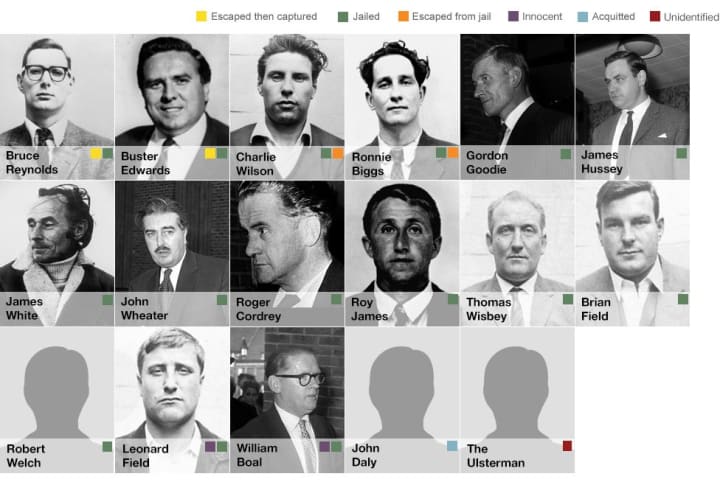
Photo by BBC News
After having tampered with the lineside signals in order to bring the train to a halt, a 15-strong gang of robbers led by Bruce Reynolds attacked the train. Other gang members included Gordon Goody, Buster Edwards, Charlie Wilson, Roy James, John Daly, Jimmy White, Ronnie Biggs, Tommy Wisbey, Jim Hussey, Bob Welch and Roger Cordrey, as well as three men known only as numbers "1," "2," and "3." A 16th man, an unnamed retired train driver, was also present at the time of the robbery.
With careful planning based on inside information from an individual known as "The Ulsterman" (named as Patrick McKenna in 2014), the robbers escaped with over £2.6 million (equivalent to £50 million today). The bulk of the stolen money was never recovered. Though the gang did not use any firearms, Jack Mills, the train driver, was beaten over the head with a metal bar. Mills' injuries were severe enough to end his career (Wikipedia, 2018).
Below will be two books published based on the factual robbery and the closed investigation files.
About the Creator
Paige H
an aspiring writer





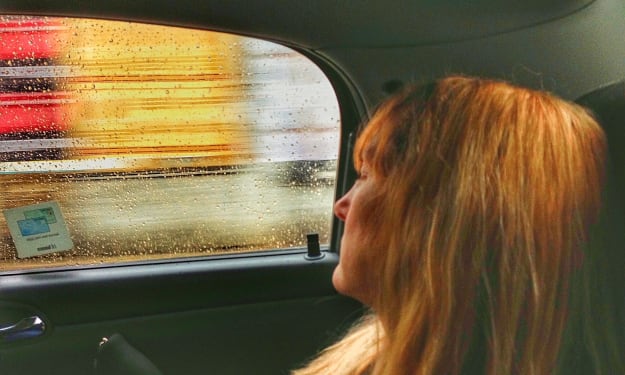
Comments
There are no comments for this story
Be the first to respond and start the conversation.